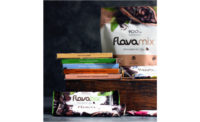One-on-one with Bryan Wurscher, Cargill Cocoa & Chocolate's new president
Exec emphasizes innovations, empowerment

Bryan Wurscher, president of Cargill's cocoa and chocolate North America business unit, at the company's offices in Lititz, Pa.


By implementing sustainable cocoa growing practices, from tree maintenance to fermentation, farmers can increase both yield and quality. Through 2011/2012, more than $7.6 million was paid out in sustainable or quality premiums, boosting farmer revenues by 17 percent.









It proved to be the most successful fast-food rollout in the company’s history. The quick service restaurant chain was looking to leverage a tortilla chip taste profile into its menu. The challenge, albeit formidable, promised to be an instant mega hit.
And Bryan Wurscher, president of Cargill’s cocoa and chocolate North America business, cites that as an example of what he foresees is possible for cocoa and chocolate.
But what on earth do corn masa and chocolate have in common? Innovation and customer service, that’s what.
It took a cooperative effort between the chain’s R&D department and Cargill’s Dry Corn Milling business to make that launch meet consumer expectations as well as customer demands. Supplying product to more than 6,000 restaurants takes both investment and involvement.
As it so happens, it was Wurscher who headed up the Dry Corn Milling business then. No surprise then that as current president of Cargill’s cocoa and chocolate business unit, he’s bullish on innovation and customer service.
Since joining Cargill’s cocoa and chocolate business unit in March 2013, Wurscher has stressed the importance of delivering similar results to its customers.
A newcomer to the cocoa and chocolate industry, the Cargill “lifer” emphasizes the need “to understand who your customer is, what they need, and what capabilities we can uniquely offer them to meet their challenges.”
At the same time, the native Minnesotan and avid hockey player believes in a balanced approach, one that addresses the needs of both customers and employees.
“I haven’t seen a business succeed without great customers and without great employees,” he says. “You have to not only satisfy customers, but engage employees as well.”
As Wurscher points out, “We have people here who understand how to make chocolate, how to manage the supply chain. I want to ensure that we have an environment where these people can thrive, which will then support our growth.”
As he explains, most of his time and energy is spent on strategy, customers and people. “I don’t work in the business, I work on the business.”
For Cargill Cocoa & Chocolate North America, that business encompasses three chocolate and compound plants in the United States and one in Canada. It also means being the supply chain for cocoa powders from Cargill’s’s facilities in Europe, West Africa and Brazil.
No surprise then that Wurscher has spent a good portion of the last year traveling extensively to meet with customers and getting to know them first-hand — be they part of multinational corporations or proud, multi-generational family operations.
And although it’s convenient to break down customers by size, separating them into groups of “big, intermediate or little guys,” the Cargill exec finds plenty of similarities amongst them all.
“Our smaller customers may not have the resources or infrastructure, but they have the same business challenges as the big guy,” Wurscher says. “The RCI [Retail Confectioners International]-type customer behaves just like the large CPG customer. They typically have multiple locations, growth strategies and are run by second- and third-generation owners who are highly educated and are strategic thinkers.”
Given Cargill Cocoa & Chocolate’s stable of brands — Peter’s, Wilbur, Gerkens and Veliche — the business unit can meet a broad range of wants and needs.
“Confectionery customers looking for a Swiss-type fine chocolate opt for Peter’s while others looking for a bolder, American-style taste preferWilbur,” he says. “WithGerkens, we can supply a wide range of cocoa powders and for those looking for a Belgian chocolate, we haveVeliche.”
When asked about organic chocolate, Wurscher acknowledged that there will always be a segment of consumers favoring such products. “But for Cargill, we don’t see that as a growth business.”
He cites the need to focus resources on establishing a more sustainable supply chain of cocoa as well as investing in innovation, be it in product development or in processing technology.
“It’s important to recognize that responsible and sustainable sourcing of cocoa isn’t just about eliminating child labor; it’s also about helping the farmer develop a sustainable lifestyle,” Wurscher explains.
He points to Cargill’s Cocoa Promise as an example of what that kind of commitment looks like. At the end of 2013, 60,000 farmers had received training at Farmer Field Schools in Cote d’Ivoire. Nearly 90 partner cooperatives were certified to third-party sustainability standards. And $7.6 million was paid out in sustainable or quality premiums through 2011/2012, resulting in a 17 percent increase in farmer revenues in Cote d’Ivoire.
A similar effort is occurring in Ghana, where Cargill has been involved since 2006. As a result, the company has trained more than 9,500 cocoa farmers across 220 communities. Projections call for 20,000 farmers to have received certification standards training by 2016.
“In addition to allocating resources in West Africa, we’ve helped reintroduce cocoa in Vietnam, planted five million seedlings in Brazil and invested $100 million in a new cocoa processing facility in Indonesia,” says Wurscher.
With regards to innovation, he cites Cargill’s successful launch of protein compound coatings as an area of high interest, providing snack and energy bar manufacturers with new options in formulating better-for-you products.
Wurscher believes that one of the keys to success revolves around translating in-house innovations into new product launches for customers. It’s a game plan he’s looking to execute within Cargill’s cocoa and chocolate business.
“I, of course, realize, I can’t do it all,” he says. “That’s why it’s important to empower people, to ensure the decision rights are held at the right level. Our employees need to become intimate with our customers, to have multiple touch points.”
And that is how Wurscher determines success.
“Financial results are typically lagging indicators of other things that have been done right,” he explains. “In the end, when customers are satisfied and employees engaged, you’re on the right path.”
Looking for a reprint of this article?
From high-res PDFs to custom plaques, order your copy today!















